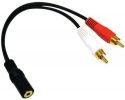DanielT
Major Contributor
Headphone amplifier new vs vintage?
See from # 17.

 audiosciencereview.com
audiosciencereview.com
What do you think?
See from # 17.

Amplifier NAD 3020 measurements from Stereo Review: 1979
Due to the discussion about NAD 3020 in this thread: https://audiosciencereview.com/forum/index.php?threads/does-the-amplifier-amplify-the-noise.30106/page-2 .., I thought it would fit with a separate thread. If you had a NAD 3020 then what did you think of that amplifier? The NAD 3020 is a...
 audiosciencereview.com
audiosciencereview.com
What do you think?


